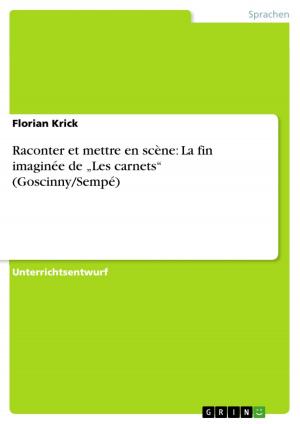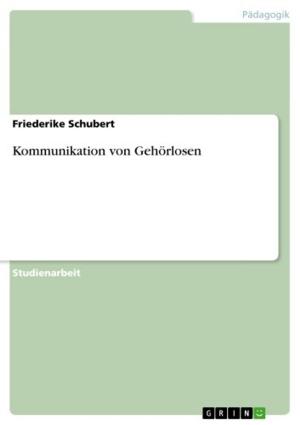Animal Poetry. 'The Bat is dun, with wrinkled Wings' and 'Man and Bat' in connection with Thomas Nagel's essay 'What is it like to be a bat?'
Fiction & Literature, Literary Theory & Criticism, British| Author: | Judith Leitermann | ISBN: | 9783668270596 |
| Publisher: | GRIN Verlag | Publication: | August 5, 2016 |
| Imprint: | GRIN Verlag | Language: | English |
| Author: | Judith Leitermann |
| ISBN: | 9783668270596 |
| Publisher: | GRIN Verlag |
| Publication: | August 5, 2016 |
| Imprint: | GRIN Verlag |
| Language: | English |
Seminar paper from the year 2013 in the subject English - Literature, Works, grade: 1,5, University of Frankfurt (Main) (Institut für England- und Amerikastudien), course: Animal Poetry, language: English, abstract: In my paper, Thomas Nagel's essay 'What is it like to be a bat?' will be discussed in connection with Emily Dickinson's poem 'The bat is dun, with wrinkled wings' and D. H. Lawrence's poem 'Man and Bat'. Furthermore, I want to prove in how far Nagel's basic ideas can be found in these two different poems. Thomas Nagel's basic idea is that there are some experiences that cannot be fully explained, that human experience can only be subjective and that scientists, though they try to analyse things, cannot explain everything. In his essay 'What is it like to be a bat?' he gives the example of persons who are blind from birth. Therefore, they will never experience, e.g. the colours of flowers because they have never seen them. As well as we do not know the experiences of a blind person, we will never be able to understand a bat, even if we know how their sonar system works.
Seminar paper from the year 2013 in the subject English - Literature, Works, grade: 1,5, University of Frankfurt (Main) (Institut für England- und Amerikastudien), course: Animal Poetry, language: English, abstract: In my paper, Thomas Nagel's essay 'What is it like to be a bat?' will be discussed in connection with Emily Dickinson's poem 'The bat is dun, with wrinkled wings' and D. H. Lawrence's poem 'Man and Bat'. Furthermore, I want to prove in how far Nagel's basic ideas can be found in these two different poems. Thomas Nagel's basic idea is that there are some experiences that cannot be fully explained, that human experience can only be subjective and that scientists, though they try to analyse things, cannot explain everything. In his essay 'What is it like to be a bat?' he gives the example of persons who are blind from birth. Therefore, they will never experience, e.g. the colours of flowers because they have never seen them. As well as we do not know the experiences of a blind person, we will never be able to understand a bat, even if we know how their sonar system works.















